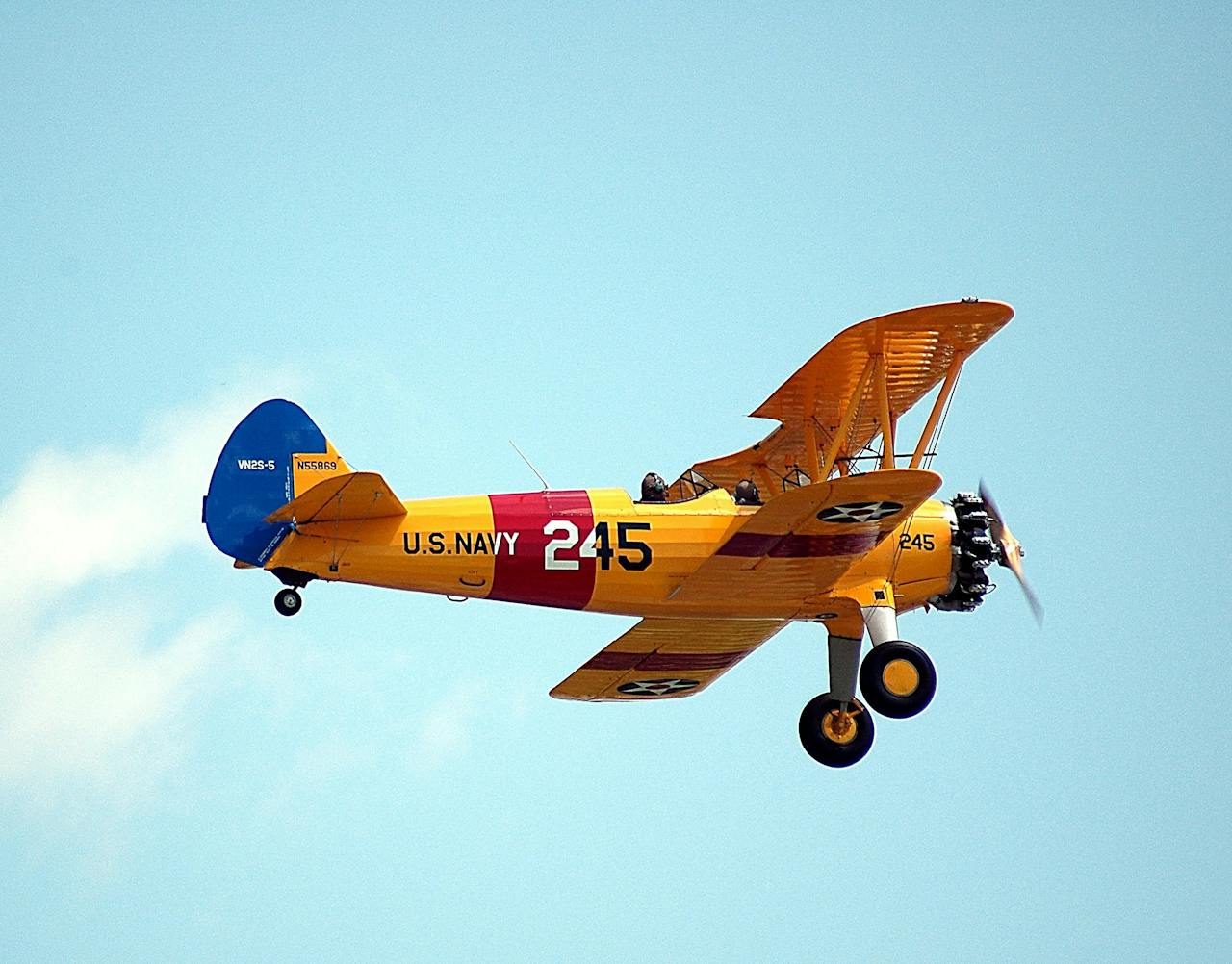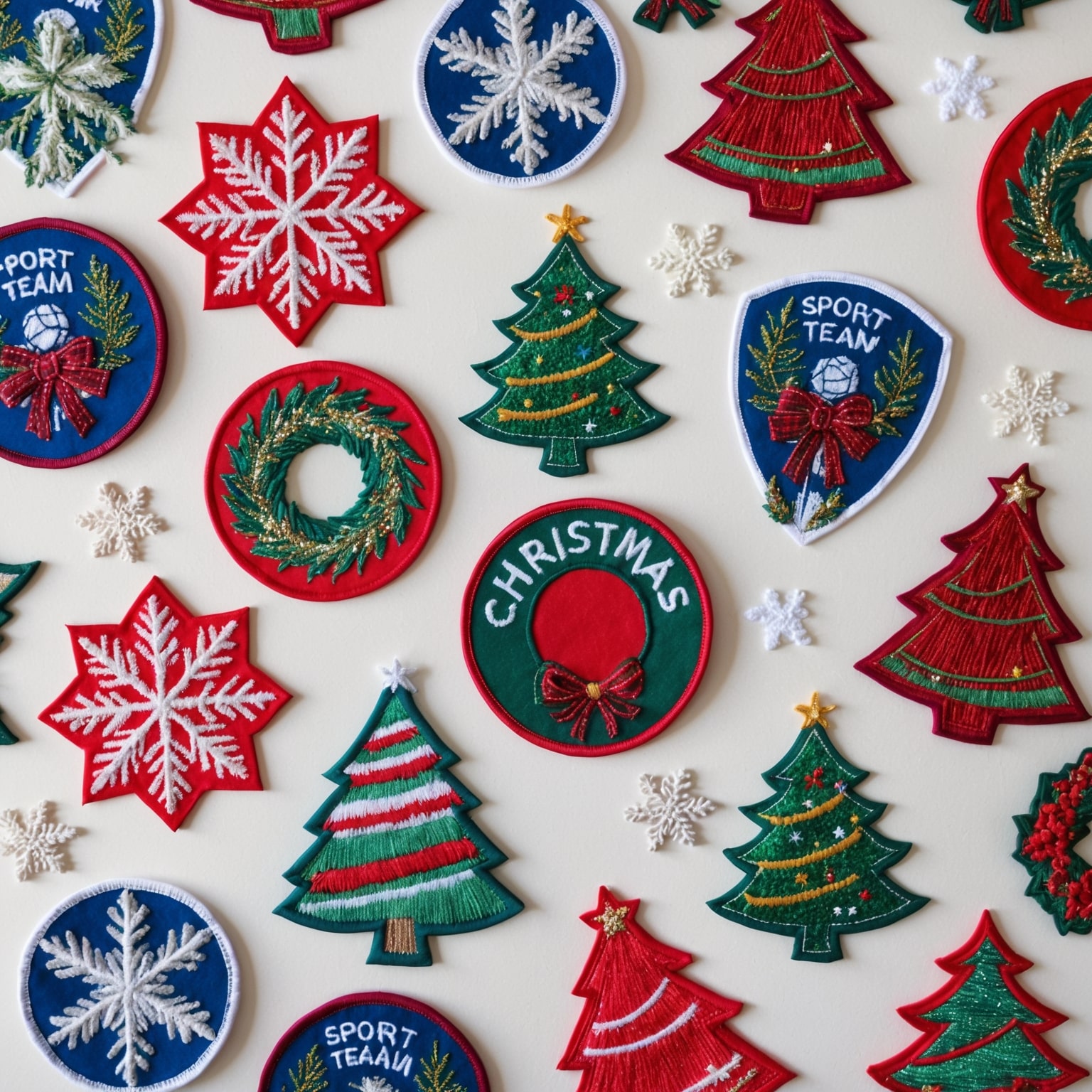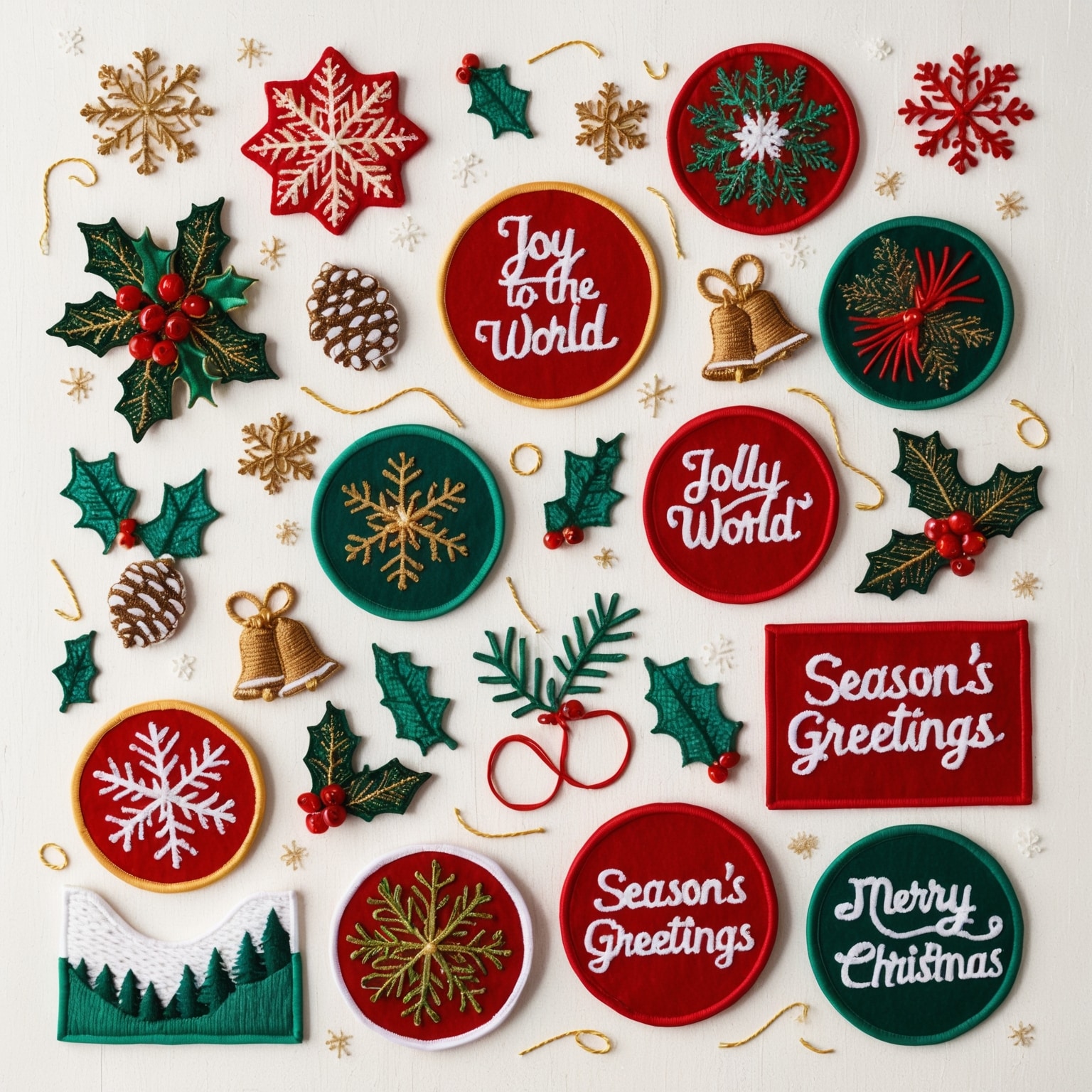Aviation patches are more than just pieces of embroidered fabric; they are symbols of identity, pride, and achievement that have been woven into the fabric of aviation history for decades. From the early days of flight to modern-day aerospace missions, aviation patches have played a significant role in commemorating milestones, recognizing accomplishments, and fostering a sense of belonging among aviators. These patches tell the stories of daring pilots, innovative aircraft, and historic missions, making them cherished collectibles and important artifacts in the aviation community. In this article, we will explore the rich history of aviation patches, their evolution over the decades, and their enduring legacy in the world of aviation.
The Origins of Aviation Patches
Early Beginnings in Military Aviation
The history of aviation patches can be traced back to the early days of military aviation when pilots and aircrew members sought ways to distinguish themselves and their units. These early patches were often handmade and reflected the unique identity and spirit of the units they represented.
- World War I: The concept of aviation patches began during World War I, when military aviation was still in its infancy. Pilots and aircrew members, who were often seen as elite warriors of the sky, began creating and wearing patches to symbolize their units and missions. These patches were usually simple, featuring hand-stitched designs that represented the aircraft, animals, or symbols associated with the unit.
- Squadron Insignia: As military aviation evolved, so did the tradition of wearing patches. Squadrons and air units began adopting official insignia, which were often depicted on patches worn by the members. These insignia became a source of pride and a way to foster camaraderie among the aviators.
- Recognition and Identity: The use of patches allowed aviators to quickly identify each other’s units and ranks, which was especially important during joint operations and missions. The patches also served as a form of recognition for the bravery and skills of the pilots, who were often involved in dangerous and high-stakes missions.
The Evolution of Design and Materials
As aviation patches gained popularity, their design and production techniques became more sophisticated. The evolution of these patches reflected the advancements in aviation technology and the growing importance of visual identity within the military.
- World War II: During World War II, aviation patches became more elaborate and widespread. The growth of the U.S. Army Air Forces and other military aviation branches led to the creation of hundreds of unique squadron patches. These patches often featured detailed and colorful designs that incorporated elements such as aircraft, mascots, and symbols of strength and valor. The use of embroidery machines allowed for more intricate and durable patches, which became a standard part of military uniforms.
- Post-War Era: After World War II, the tradition of wearing aviation patches continued, with many veterans proudly displaying their patches as a reminder of their service. The post-war era also saw the rise of commercial aviation, and airlines began adopting patches to represent their brand and crew members. These patches often featured the airline’s logo, name, and other elements that reflected the company’s identity and values.
- Space Exploration: The advent of space exploration in the 1960s brought a new dimension to the world of aviation patches. NASA and other space agencies began designing mission patches for astronauts and space missions. These patches became iconic symbols of humanity’s journey into space, with designs that captured the spirit of exploration and innovation.
The Role of Aviation Patches in Military History
Symbolism and Camaraderie in Combat
In military aviation, patches have always played a crucial role in symbolizing the identity and camaraderie of air units. These patches are not just decorative items; they carry deep meanings and reflect the shared experiences of those who wear them.
- Unit Pride: Military aviation patches are often designed to reflect the pride and spirit of the unit. For example, patches may feature a specific aircraft, a mascot, or a symbol that represents the unit’s mission. These elements are carefully chosen to convey the values, skills, and history of the unit, making the patch a powerful symbol of identity.
- Commemorating Achievements: Patches are also used to commemorate significant achievements and milestones. For example, a squadron may design a special patch to mark its participation in a historic mission or to celebrate a major victory. These patches serve as reminders of the unit’s accomplishments and the bravery of its members.
- Fostering Camaraderie: Wearing a patch that represents a specific unit or mission fosters a sense of camaraderie among aviators. The shared experience of belonging to the same unit and participating in the same missions creates strong bonds among the members. The patch becomes a symbol of these bonds, serving as a reminder of the teamwork and trust that are essential in military aviation.
Aviation Patches in Major Conflicts
Throughout history, aviation patches have been a part of major military conflicts, from World War II to the Gulf War. These patches provide a unique lens through which we can explore the history of military aviation and the experiences of those who served.
- World War II: World War II was a pivotal time for the development of aviation patches. As the war progressed, the number of air units increased, leading to the creation of hundreds of new patches. These patches often featured bold and colorful designs that reflected the determination and fighting spirit of the Allied forces. Many of the most famous and collectible aviation patches date back to this era, including those worn by units such as the Flying Tigers and the 8th Air Force.
- Korean War: The Korean War saw the continued use of aviation patches, with many units designing new patches to reflect the changing nature of air combat. Jet aircraft began to replace propeller-driven planes, and this technological shift was often reflected in the designs of the patches. The patches from this era are notable for their depiction of jet fighters, as well as symbols of the Cold War rivalry between the United States and the Soviet Union.
- Vietnam War: During the Vietnam War, aviation patches took on a more personalized and informal style. Many patches were created by individual units or even by the aviators themselves, often featuring humorous or irreverent designs. These patches became a way for aviators to express their individuality and camaraderie in the face of the challenges of the war. The use of subdued colors and camouflage patterns also became more common during this period.
- Gulf War and Beyond: The Gulf War marked the beginning of a new era in military aviation, with advanced technology and precision warfare playing a central role. Aviation patches from this period often reflect the modern, high-tech nature of air combat, with designs that emphasize stealth, precision, and power. In the years following the Gulf War, aviation patches have continued to evolve, incorporating new symbols and technologies that reflect the changing landscape of military aviation.
The Legacy of Aviation Patches in Civilian Aviation
Airline Crew Patches: Symbols of Service and Identity
In the world of commercial aviation, patches have become an important part of airline uniforms, serving as symbols of service, identity, and professionalism.
- Airline Branding: Many airlines design custom patches for their crew members, featuring the airline’s logo, colors, and other branding elements. These patches help to reinforce the airline’s identity and create a cohesive look for the crew. For passengers, these patches serve as a visual reminder of the airline’s brand and the professionalism of its staff.
- Service Recognition: Patches are often used to recognize the service and achievements of airline employees. For example, crew members may receive patches to mark years of service, special certifications, or participation in significant events. These patches serve as a way to honor the dedication and expertise of airline staff, while also fostering a sense of pride and loyalty.
- Commemorative Patches: Airlines also create special patches to commemorate significant milestones, such as the launch of a new route, the introduction of a new aircraft, or the celebration of an anniversary. These commemorative patches become cherished keepsakes for crew members and collectors, capturing important moments in the airline’s history.
Aviation Clubs and Organizations
Aviation patches are also widely used by aviation clubs and organizations, where they serve as symbols of membership, camaraderie, and shared passion for flight.
- Pilot Associations: Many pilot associations and flying clubs design custom patches for their members, featuring the association’s logo and other symbols of aviation. These patches help to create a sense of belonging among members, who share a common love for flying and a commitment to promoting aviation.
- Airshows and Aviation Events: Aviation patches are often created for airshows, fly-ins, and other aviation events. These patches serve as souvenirs for participants and attendees, commemorating the excitement and camaraderie of the event. Collecting these patches has become a popular hobby for aviation enthusiasts, who treasure them as mementos of their experiences.
- Youth Aviation Programs: Youth aviation programs, such as the Civil Air Patrol and the Young Eagles, use patches as part of their efforts to inspire and educate the next generation of aviators. These patches are awarded to young participants who complete training programs, achieve milestones, or participate in special events. The patches serve as symbols of their accomplishments and encourage them to pursue careers in aviation.
The Art of Designing Aviation Patches
Key Design Elements
Designing an aviation patch involves a careful balance of creativity, symbolism, and functionality. The goal is to create a patch that resonates with the aviators, captures the essence of the unit or organization, and becomes a cherished symbol of pride and identity.
1. Shape and Size
The shape and size of the patch are fundamental aspects of its design. While the traditional shape of an aviation patch is round, custom patches can be made in various shapes to add uniqueness and visual interest.
- Traditional Round Patches: Round patches are versatile and work well for most designs. They offer a balanced composition of text and imagery and are easy to sew onto uniforms or jackets.
- Custom Shapes: Consider designing the patch in a shape that reflects the aviation theme. For example, a patch could be shaped like an aircraft, a wing, or a propeller, symbolizing the specific focus of the unit or organization.
- Size Considerations: The size of the patch should be large enough to allow for detailed designs but not so large that it becomes cumbersome. A patch between 3 and 5 inches in diameter is typically ideal for most designs.
2. Materials and Embroidery
The choice of materials and embroidery techniques can greatly influence the look and feel of the aviation patch. Common materials include twill, felt, and leather, each offering different aesthetics and durability.
- Twill Fabric: Twill is a popular choice for aviation patches due to its durability and smooth surface, which allows for detailed embroidery. Twill patches are often used for military and commercial aviation patches.
- Felt Fabric: Felt offers a soft, textured surface that adds a classic, vintage feel to the patch. Felt patches are often used for commemorative or retro-themed designs.
- Leather Patches: Leather patches are less common but offer a rugged, durable look that is well-suited for aviator jackets and flight suits. Leather patches are often embossed or debossed with the design, creating a distinctive appearance.
- Embroidery Techniques: The embroidery technique used can greatly impact the final look of the patch. High-density embroidery allows for intricate details and a polished finish, while low-density embroidery creates a more subtle, textured effect.
3. Colors and Thread
Color is a powerful tool in design, and the use of thread colors can add vibrancy and visual appeal to aviation patches.
- Unit or Organization Colors: Choose a color palette that aligns with the unit’s or organization’s branding. Incorporating the official colors into the patch’s design helps create a cohesive look and reinforces identity.
- Contrast and Legibility: Ensure that the colors used in the patch provide enough contrast to make the text and imagery easily readable. Dark backgrounds with light-colored text or vice versa can enhance legibility.
- Metallic Threads: Consider using metallic threads to add a touch of elegance and shine to the patch. Metallic threads can be used to highlight specific elements, such as insignia, aircraft, or text.
4. Text and Typography
The text on an aviation patch is a key element that conveys the unit’s name, mission, and any relevant slogans or messages. Typography should be carefully chosen to ensure legibility and alignment with the overall design.
- Unit or Organization Name: Include the unit’s or organization’s name prominently on the patch. This information serves as a reminder of the patch’s significance and the identity it represents.
- Slogans and Mottos: If the unit or organization has a slogan or motto, consider incorporating it into the design. The text should be concise and meaningful, adding value to the patch without cluttering the design.
- Font Selection: Choose a font that aligns with the unit’s or organization’s branding and tone. For example, a bold, modern font might convey energy and precision, while a classic serif font could represent tradition and heritage.
- Text Placement: Ensure that the text is placed strategically within the design, leaving enough space for imagery and other elements. The text should be easily readable and not compete with other design features.
5. Imagery and Symbols
Imagery and symbols are central to the design of aviation patches, as they visually convey the theme and significance of the unit or organization.
- Aircraft and Aviation Elements: The depiction of aircraft, wings, propellers, and other aviation elements is common in aviation patches. These symbols reflect the specific focus of the unit or organization, whether it be fighter jets, transport planes, or helicopters.
- Mascots and Emblems: Many aviation patches feature mascots or emblems that represent the spirit and character of the unit or organization. These elements add personality to the patch and make it more memorable.
- Mission-Specific Imagery: For patches that commemorate specific missions or events, consider incorporating imagery that reflects the mission’s objectives or outcomes. For example, a patch for a search and rescue mission might feature a helicopter and a rescue basket, while a patch for a reconnaissance mission might include a radar or satellite.
Customization Options for Maximum Impact
To create a truly memorable and impactful aviation patch, consider adding customization options that make each patch unique and personalized for the wearer.
1. Personalization
Personalized aviation patches can make a significant impact by adding a personal touch for each aviator. This can include embroidering names, ranks, or specific achievements on the patch.
- Embroidered Names: Consider offering the option to have the wearer’s name embroidered on the patch. This personal touch can make the patch more meaningful and serve as a lasting reminder of their service or participation.
- Custom Ranks: For military aviation patches, consider including the wearer’s rank or position within the unit. This not only recognizes their role but also adds a sense of exclusivity to the patch.
- Achievement Markers: If the patch is being awarded for specific achievements, consider adding markers or symbols that represent the achievement, such as stars, wings, or medals.
2. Limited Editions
Creating limited edition aviation patches can add a sense of exclusivity and increase their value as collectibles.
- Numbered Editions: Consider numbering each patch in the series, such as “1 of 100.” This adds a sense of rarity and can make the patch more desirable to collectors and aviators.
- Special Embroidery Techniques: For limited edition patches, consider using special embroidery techniques, such as 3D puff embroidery, to add depth and dimension to the design. This technique can make the patch stand out and create a unique visual effect.
- Mission-Specific Designs: Limited edition patches can feature designs specific to a mission, event, or milestone. These patches can become highly sought-after memorabilia for aviators and collectors.
3. Packaging and Presentation
The way aviation patches are presented can greatly enhance their impact. Consider investing in high-quality packaging that adds to the overall experience.
- Custom Display Cases: Present the patches in custom display cases that feature the unit’s or organization’s branding. This not only protects the patch but also adds a touch of elegance to the presentation.
- Presentation Ceremonies: If possible, present the aviation patches during a formal ceremony or at a significant moment during the mission or event. This adds to the patch’s significance and makes the wearer feel valued and recognized.
The Future of Aviation Patches
Technological Innovations in Patch Design
As technology continues to advance, the design and production of aviation patches will become even more innovative, offering new possibilities for capturing the legacy of aviation.
- 3D Embroidery: Advances in embroidery technology will allow for more intricate and detailed designs, including 3D effects that add depth and dimension to the patch. This technology will enable aviation units and organizations to create highly customized and unique patches that stand out.
- Augmented Reality (AR): The integration of AR technology into aviation patches could offer interactive experiences for aviators and collectors. By scanning the patch with a smartphone, wearers could access additional content, such as videos, mission briefings, or historical information related to the unit or mission.
- Sustainable Materials: As sustainability becomes a priority, more aviation units and organizations will opt for eco-friendly materials in their patches, such as recycled fabrics, biodegradable threads, or sustainably sourced leather. This aligns with the growing demand for environmentally responsible practices in aviation.
Expanding the Use of Aviation Patches
The use of aviation patches is expected to expand as more organizations recognize their value in fostering identity, commemorating achievements, and building a sense of belonging.
- Cross-Organization Collaborations: Aviation patches can be used to celebrate collaborations between different aviation organizations, fostering a sense of unity and shared purpose. These patches can be awarded for joint initiatives, such as international airshows or joint military exercises, encouraging continued partnership and cooperation.
- Youth and Community Engagement: Aviation patches can be used to engage with youth and community members who are interested in aviation. By distributing patches to young aviation enthusiasts, educators, and volunteers, organizations can inspire the next generation of aviators and build stronger relationships with the community.
- Public Recognition and Outreach: Aviation patches can also be used as a tool for public recognition and outreach, reinforcing the organization’s commitment to safety, innovation, and excellence in aviation. By distributing patches to the public, aviation organizations can build stronger relationships with stakeholders and promote a positive image of the aviation industry.
Conclusion
Aviation patches are more than just decorative items; they are powerful symbols of identity, pride, and achievement that have woven themselves into the fabric of aviation history over the decades. These patches serve as lasting reminders of the bonds formed between aviators, the milestones achieved, and the pride taken in the pursuit of excellence in the skies.
By carefully considering the design elements, customization options, and presentation methods, aviation units and organizations can create patches that resonate with aviators and leave a lasting legacy. As technology and design possibilities continue to evolve, the future of aviation patches looks promising. Whether through innovative designs, sustainable practices, or interactive features, aviation patches will remain a valuable and cherished part of the aviation world, helping to build strong, motivated, and dedicated aviation communities for years to come.
If you are interested in purchasing high-quality custom patches, feel free to call us at 1-877-503-8485 or fill out one of our FREE quotes here.




